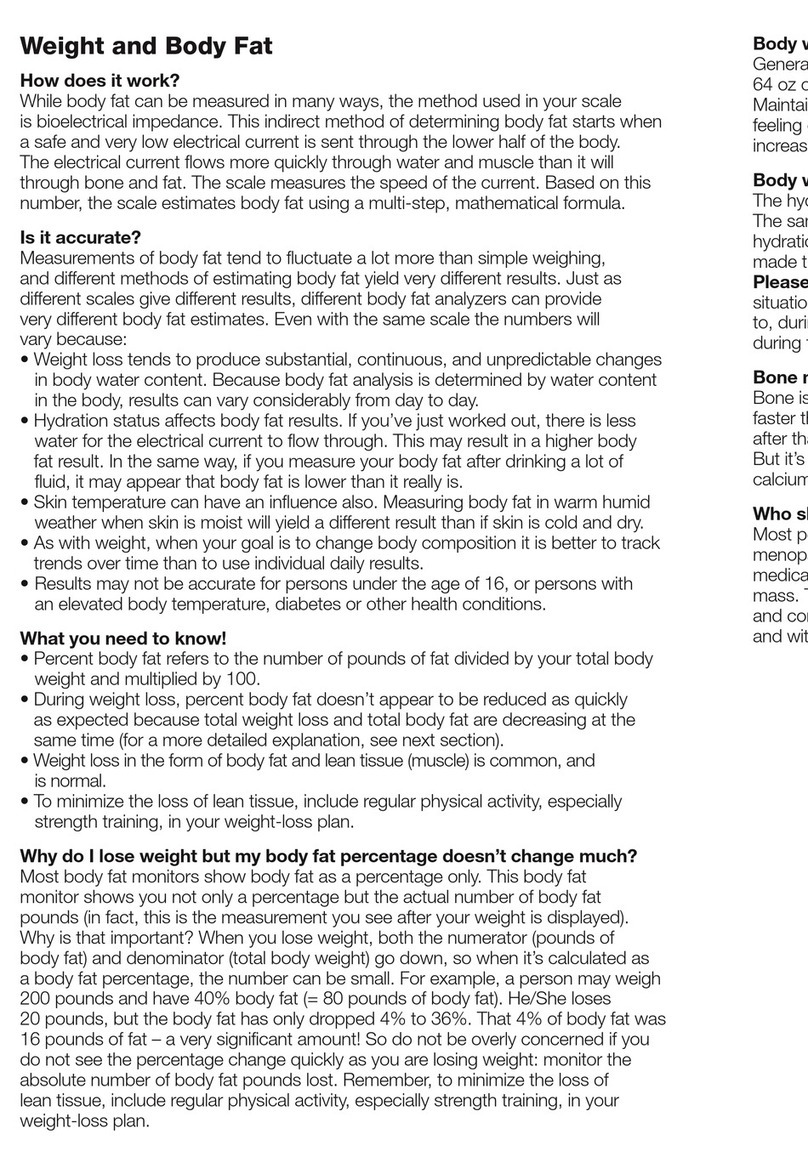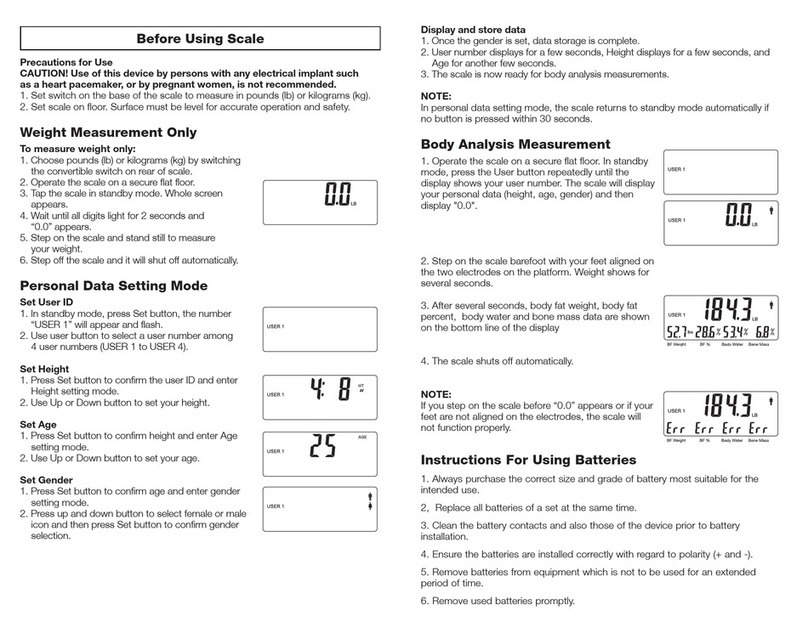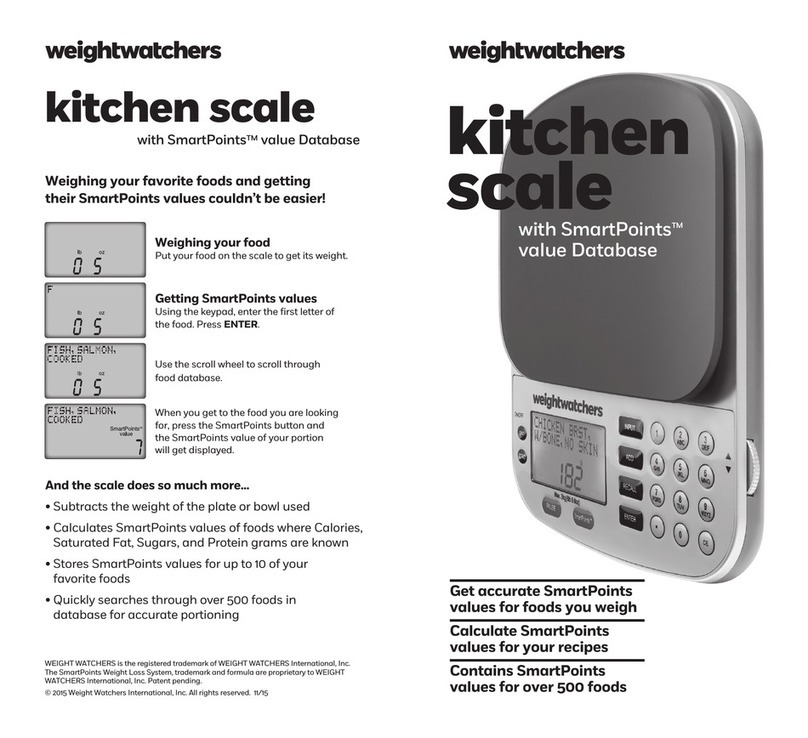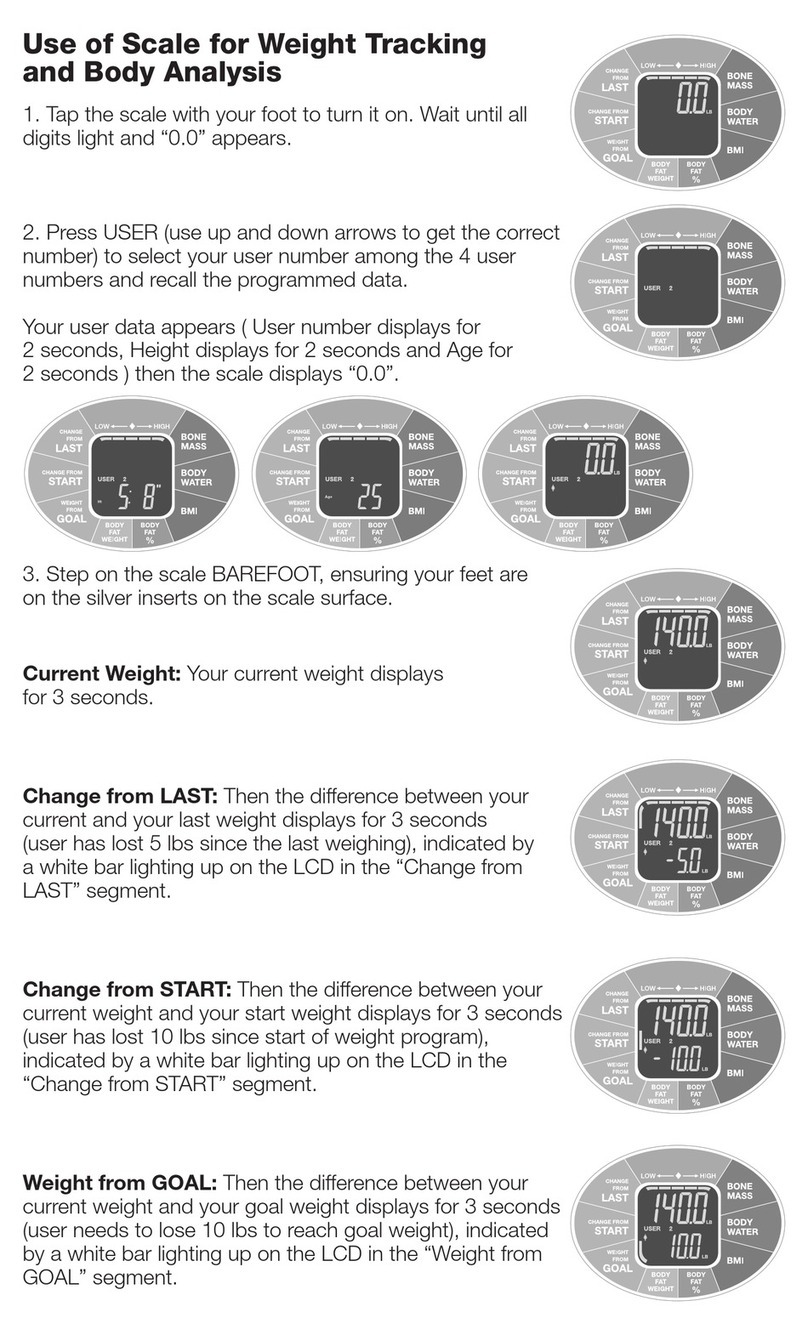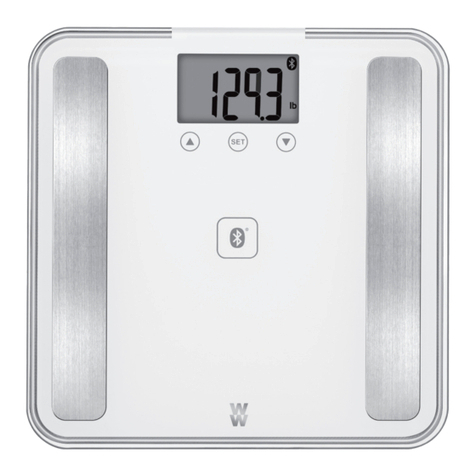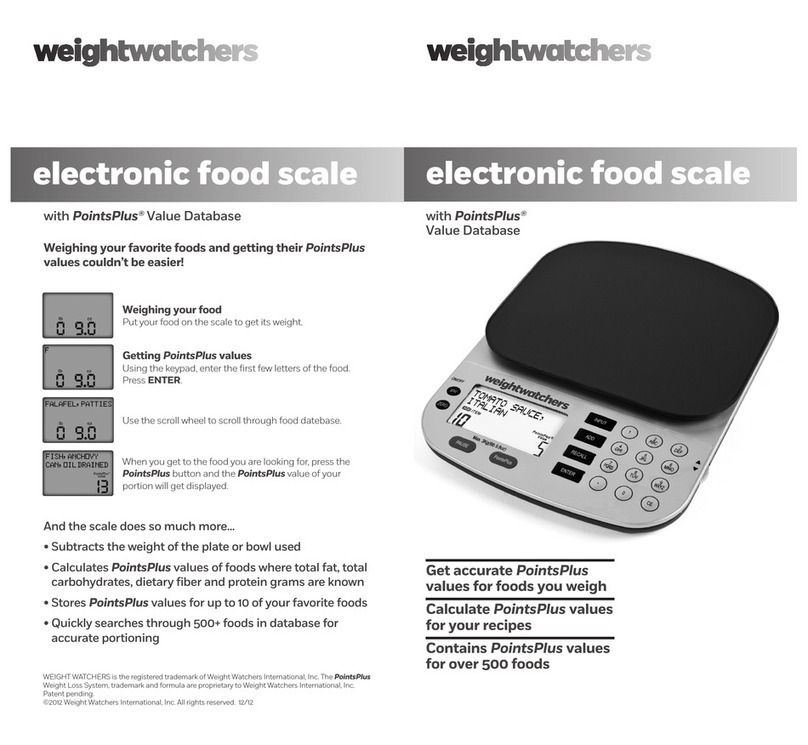
Weight and Body Fat
How does it work?
While body fat can be measured in many ways, the method used in your scale
is bioelectrical impedance. This indirect method of determining body fat starts when
a safe and very low electrical current is sent through the lower half of the body.
The electrical current flows more quickly through water and muscle than it will
through bone and fat. The scale measures the speed of the current. Based on this
number, the scale estimates body fat using a multi-step, mathematical formula.
Is it accurate?
Measurements of body fat tend to fluctuate a lot more than simple weighing,
and different methods of estimating body fat yield very different results. Just as
different scales give different results, different body fat analysers can provide
very different body fat estimates. Even with the same scale the numbers will
vary because:
• Weight loss tends to produce substantial, continuous, and unpredictable changes
in body water content. Because body fat analysis is determined by water content
in the body, results can vary considerably from day to day.
• Hydration status affects body fat results. If you’ve just worked out, there is less
water for the electrical current to flow through. This may result in a higher body
fat result. In the same way, if you measure your body fat after drinking a lot of
fluid, it may appear that body fat is lower than it really is.
• Skin temperature can have an influence also. Measuring body fat in warm, humid
weather when skin is moist will yield a different result than if skin is cold and dry.
• As with weight, when your goal is to change body composition it is better to track
trends over time than to use individual daily results.
• Results may not be accurate for persons under the age of 16, or persons with
an elevated body temperature, diabetes or other health conditions.
What you need to know!
• Percent body fat refers to the number of kilograms of fat divided by your total
body weight and multiplied by 100.
• During weight loss, percent body fat doesn’t appear to be reduced as quickly
as expected because total weight loss and total body fat are decreasing at the
same time (for a more detailed explanation, see next section).
• Weight loss in the form of body fat and lean tissue (muscle) is common, and
is normal.
• To minimise the loss of lean tissue, include regular physical activity, especially
strength training, in your weight-loss plan.
Why do I lose weight but my body fat percentage doesn’t change much?
Remember that your WW body fat monitor is showing your body fat as a
percentage, not as an absolute number of kilograms. At the beginning of a weight
loss program, a person may weigh 100kg and show 30% body fat, equaling 30kg of
fat (30% of 100kg = 30kg). A few weeks later, the same person may have lost a
substantial amount of weight. Weight is now at 90kgs, yet body fat is still at 30%.
Why? Did that person not lose any fat? Yes, they did. At 90kg with 30% body fat,
the person now has 27kg of body fat (30% of 90kg = 27kg), meaning that 3kg of
the total 10kg lost were fat. So, do not be overly concerned if your percentage of
body fat does not change despite the fact that you are losing weight.
Remember, to minimise the loss of lean tissue include regular physical activity,
especially strength training, in your weight loss plan.


